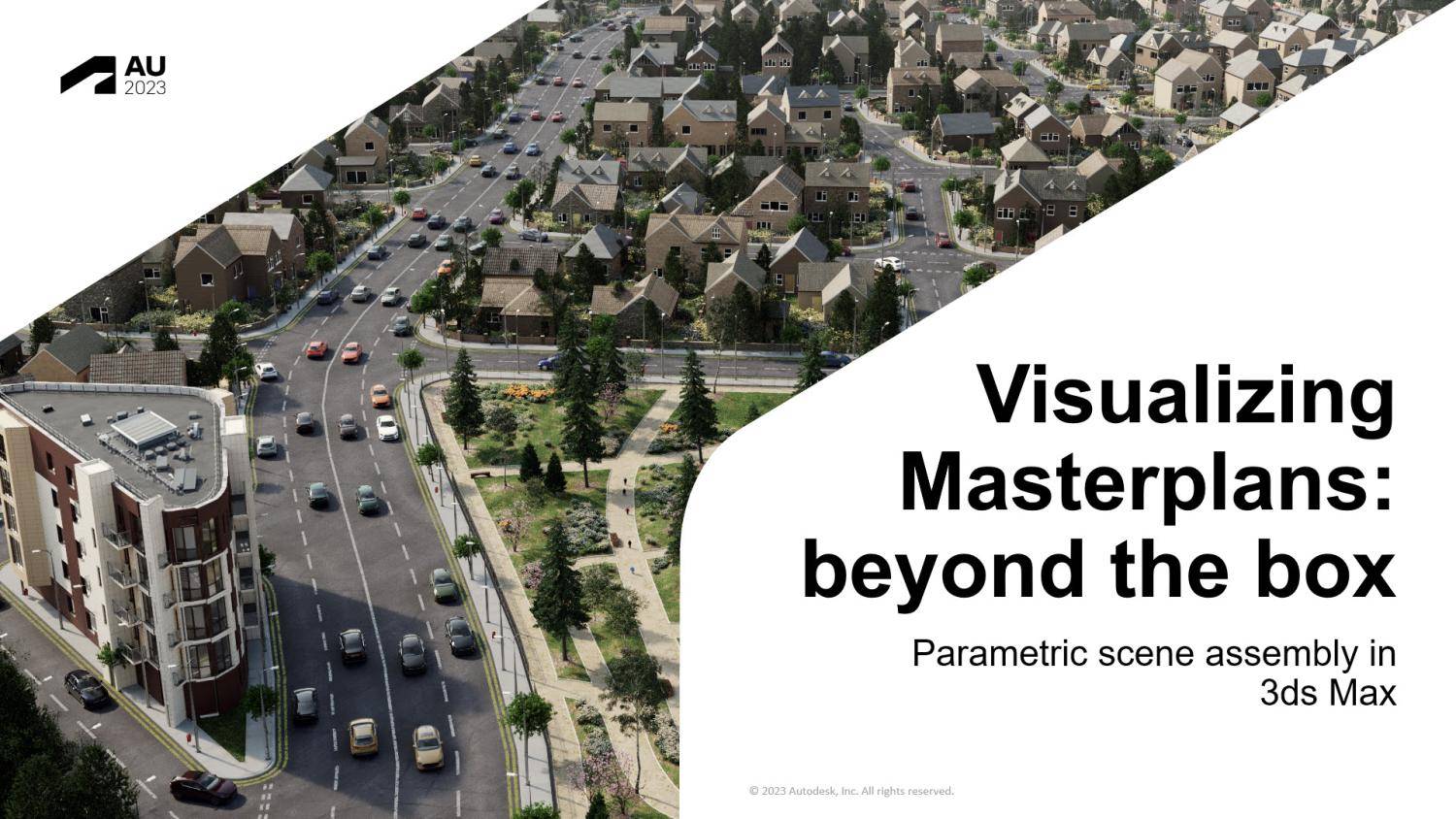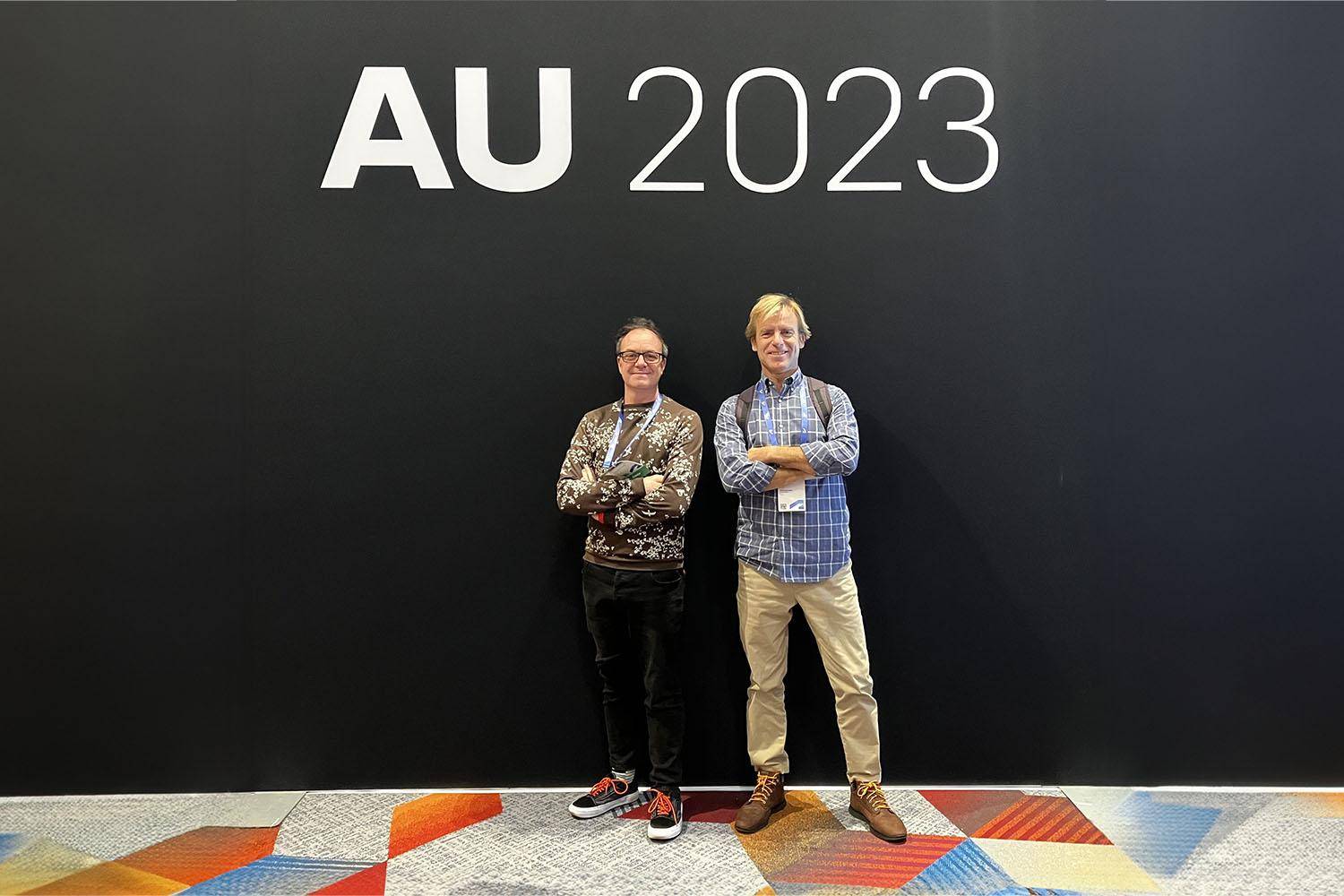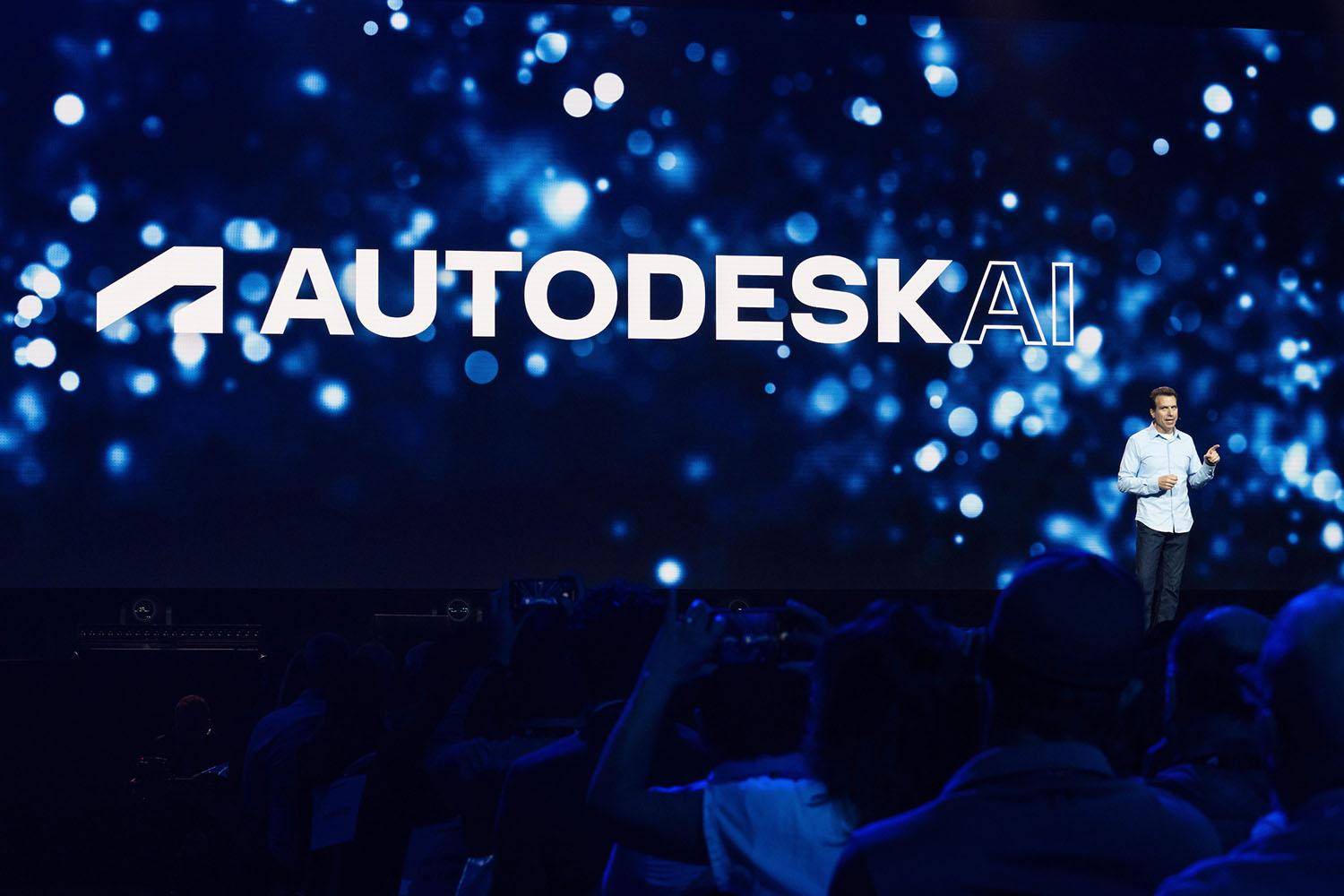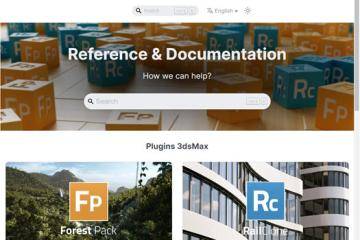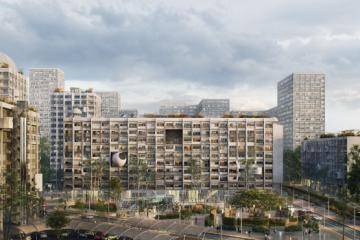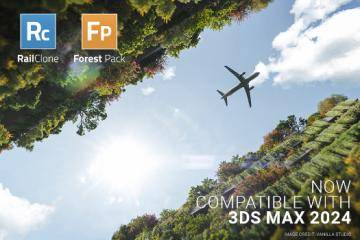Новости
Ознакомьтесь с последними разработками от ITOOSOFT
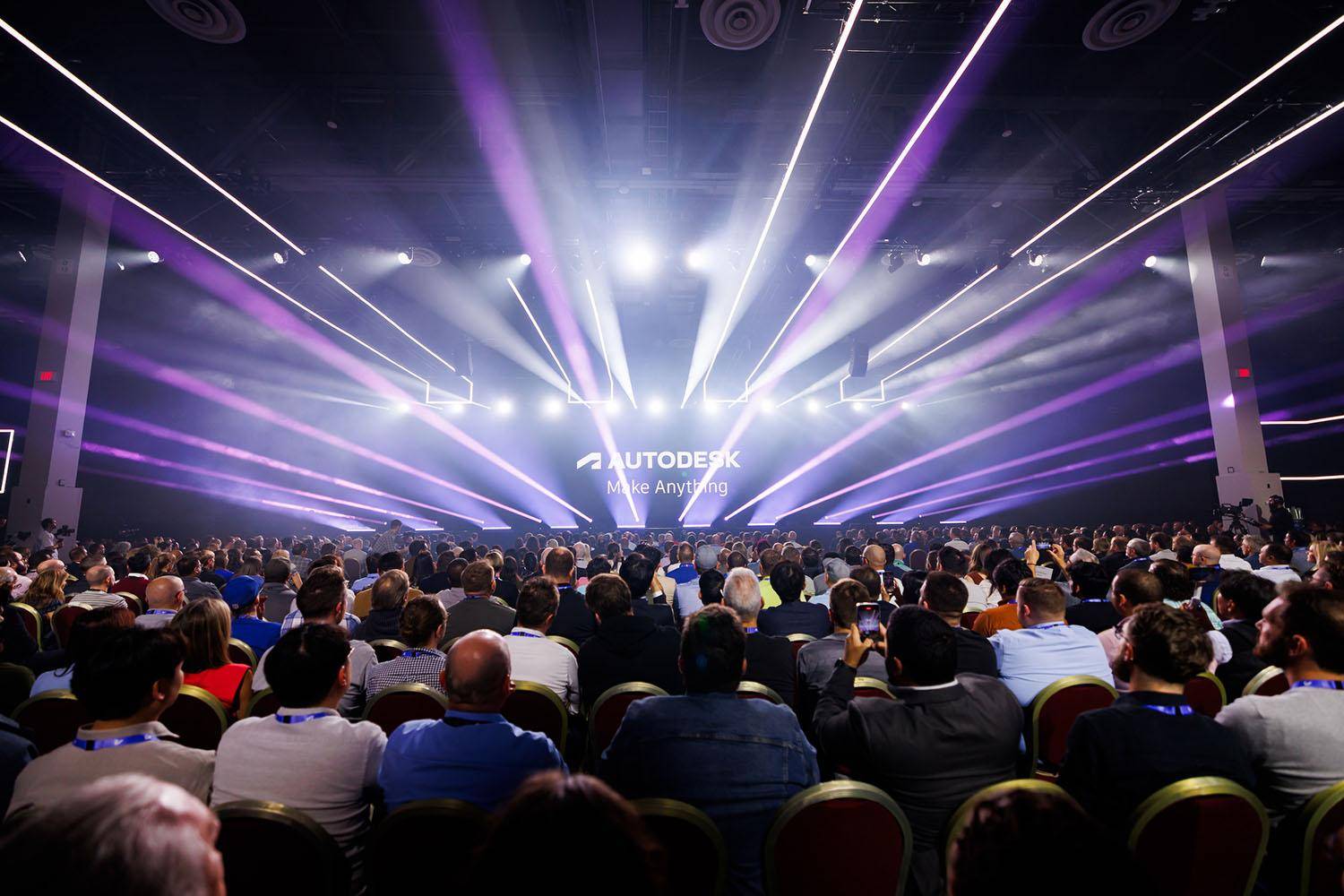
A couple of weeks ago, we downed tools and took a trip to Autodesk University 2023, held in Las Vegas. Our team had the privilege of not only attending but also presenting at this prestigious event. We were delighted to share “Beyond Massing Models: Procedural Techniques for Better Master-Plan Renders” with a capacity crowd.
What did we present?
Our talk was created to address a common bottleneck in the architectural visualization process: the time-consuming task of visualizing masterplans with numerous small residential buildings along with large towers. Traditional methods often rely on simplistic massing volumes or basic boxes, which can be limiting as a projects progress.
To tackle this, we showcased the potential of procedural modeling and texturing techniques. By integrating 3ds Max 2024's latest features with RailClone and Forest Pack, we demonstrated a new, efficient approach to procedural modeling. This method allows for quick updates, customizations, and refinements of hundreds of buildings, vastly improving workflow efficiency.
We also explored the procedural incorporation of green spaces and urban elements such as pavements, street furniture, lighting, and road markings. Our session concluded with practical tips for adding realistic trees, plants, vehicles, and other essential elements automatically, yet with precision and minimal effort.
Representing our team were two of our key members: Paul Roberts, our Training and Content Manager from the UK, and Jaime Parga, our Marketing and Business Development Manager from Spain. Their combined journey spanned over 26,000 kilometers, demonstrating our dedication to sharing our expertise, meeting and learning from our global peers.
The Event: A Cauldron of Learning and Networking
We're no strangers to conferences, but the magnitude of Autodesk University took us by surprise. The scale was astounding, with over 10,000 attendees and approximately 800 talks, making it a hub of knowledge and networking on an epic scale.
The organization of the event was impeccable, comparable to a military operation in its precision and efficiency. Every aspect was well planned, and the experience for attendees was seemless. The attention to detail was evident in the way staff were positioned at every turn, guiding us to our next destination, whether it was a meal, a talk, or the next coffee break and snack which were regular and plentiful. The sense of was enhanced by people waving light sticks, and at one point we even encountered a Boston Robotics dog - which having watched too much of the latest War of the Worlds, we initially thought might be aggressively herding us to another area, but it turned out to be an attraction being displayed in the exhibition hall.
Adding to the event's dynamic atmosphere was its overlap with the Las Vegas F1 race. Despite the complexity of road closures around the venue, Autodesk providing courtesy buses to ensure attendees could navigate their way around and return to their flights without hassle. The Las Vegas conference halls themselves were a spectacle, with the keynote hall boasting a setup of lights, lasers, and sound equipment that could rival that of a U2 concert, which is a resident at the spectacular Sphere, located just a few meters from the venue. The scale and spectacle of the event undoubtedly contributed to an unforgettable experience.
Reflections on Our Presentation
Our presentation at Autodesk University highlighted a significant focus on AEC (Architecture, Engineering and Manufacturing), with M&E (Media and Entertainment), particularly 3ds Max, appearing somewhat underrepresented. Among the extensive roster of 800 talks, only 26 prominently featured 3ds Max (around the same amount for Maya), and these mainly addressed architectural and industrial applications. This was a slightly increased focus on 3ds Max compared to the previous year however, which is a step in the right direction.
The audience composition further underscored this emphasis. When we started our talk with the question, "Who uses 3ds Max?", only a small segment of the attendees raised their hands. This response was initially alarming, given our presentation was tailored for intermediate users of 3ds Max. We later realized that a number of attendees had not read the description and weren't fully aware that 3ds Max would be the central topic of our discussion.
Despite these initial concerns, the presentation was a success, resonating well with the audience. We observed that as the session progressed, the attendees became increasingly engaged, posing thoughtful and interesting questions and offering invaluable feedback that we can use to inform our development goals. The most gratifying aspect was the feedback received post-presentation. Several attendees expressed their newfound appreciation for the capabilities of 3ds Max, with many indicating a desire to explore the application further. This positive reception and the opportunity to influence perspectives about our favorite Digital Content Creation application was particularly rewarding.
Access Our Presentation Online
All in all it was a positive experience and we hope to return next year. If you couldn't attend our session, then no worries! The entire presentation is now available online for everyone's benefit. Alongside a video recording, you'll find a PDF handout and the PowerPoint slides we used, including links to supplementary (silent) videos on YouTube.
Check it our by following this link, and if you have any questions or comments, please let us know on the forum: Beyond Massing Models: Procedural Techniques for Better Master-Plan Renders
